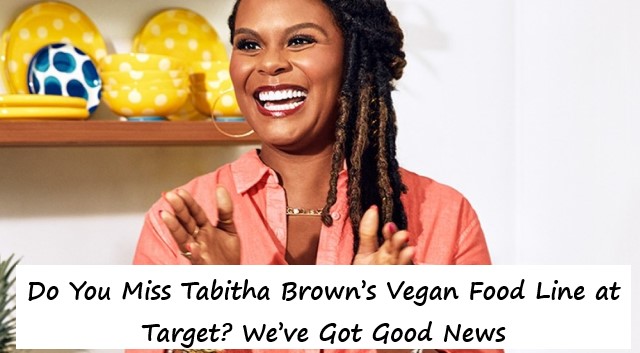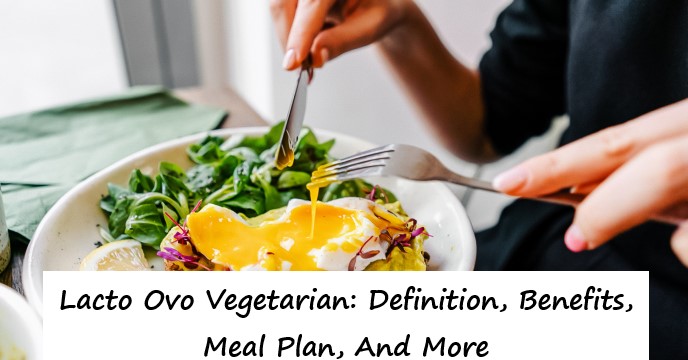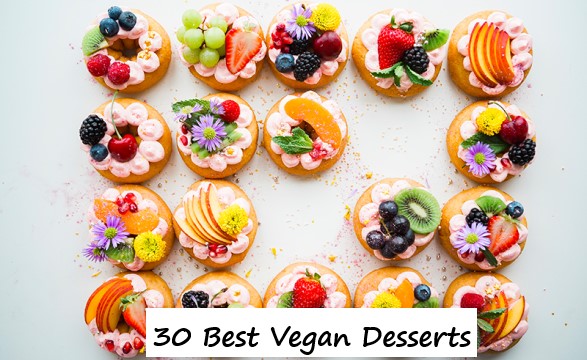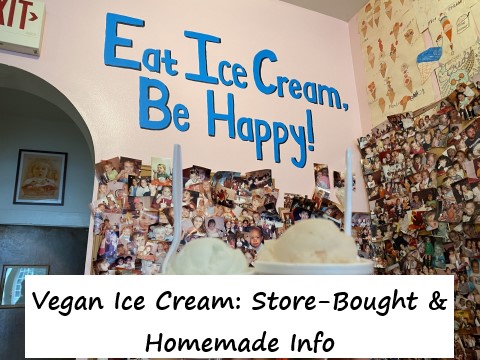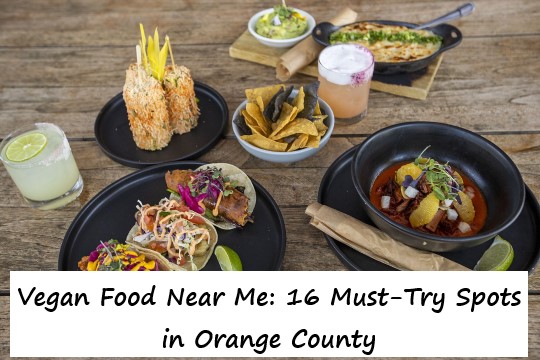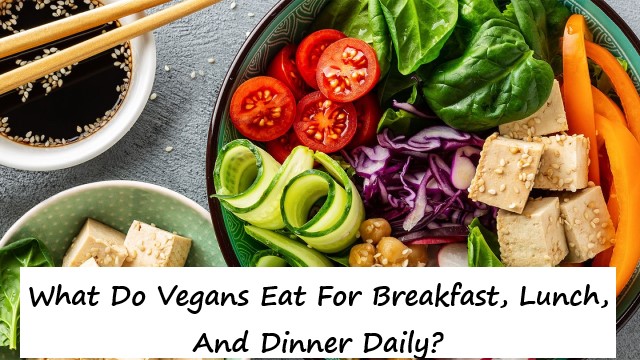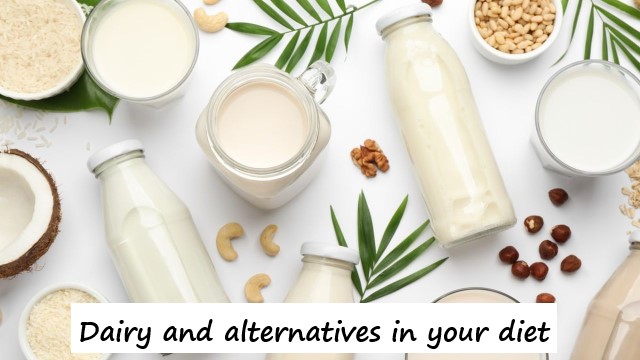Looking for a vegan Portland guide? Then you’re in the right place. Here are https://bombaysandwichco.com/‘s list of the best vegan restaurants in Portland!
Ah, Portland Oregon. The smell of coffee rising up in the morning, the misty drip of the air, he green trees surrounding your every move.
The most vegan-friendly city in the USA boasts more than 60 eateries that are fully vegan. And nearly every other joint in town accommodates vegan taste buds.
The Rose City is now a global leader in the vegan game, not only with food, but also lifestyle and vegan gear, etc etc.
Come along with us as we carve our way through the city of stumps as we wind through each quadrant of the little gem of the Pacific Northwest.

The Best of Vegan Portland!
What makes this city rank globally is not the number of vegan restaurants in Portland? Rather it’s the fact that you can go almost anywhere and get delicious and thoughtfully made vegan food…not just at vegan-only spots.
That said, vegan restaurants, cafes, and shops abound. There’s even a vegan strip mall and vegan tattoo shop in Portland (see below)! You can get everything you need as a vegan in this awesome city. Even good vegan vibes!
Vegan Cafes in Portland
First up, let’s begin with the bean and its devout worshipers.
The best vegan cafes to start your day with a cup of the black gold and a bite, the very reason alone why many foodies flock to Portland, the coffee.
Sweetpea Baking Company
May as well start at the beginning.
When friends would visit, I would always take them by Sweetpea Baking Company, the originators.
They’ve been cranking out vegan specialties like wedding cakes and other tasty delights for years now. Quality is key here, and the people at Sweetpea are a dedicated bunch.
Saturday is donut day, and Mondays are for the cronuts at this stellar vegan spot on SE Stark.
Along with the sweet treats, their savory breakfasts pack a wallop, and vegan sandwiches are also on the menu, along wit a selection of salads. Sweetpea started back in 2005, and their still going strong today.
Tiny Moreso
Another place on NE 42nd is Tiny Moreso, an all vegan and gluten-free menu, with the exception of a few items with honey.
Toast with avocado or spreads like nut butter. Seasonal cheesecakes to die for.
This little spot has fresh juices and smoothies too, and also plenty of sweet treats. They also have soups, salads, and paninis, if you’re craving something savory but light.
Jet Black Coffee Company
Jet Black Coffee Company is a Portland vegan cafe that serves Water Avenue Coffee.
Their goodies come from vegan bakeries like Shoofly, Bowery Bagels, Sweetpea and others.
Shoofly Vegan Bakery and Cafe
On SE 11th Avenue you’ll find Shoofly Vegan Bakery and Cafe.
As one of the titans of the Portland vegan scene, these people have it all. From a plethora of pies and cupcakes, to full cookie trays, to specialty cakes like German chocolate, carrot cake, cookies n cream, and tiramisu to name a few.
They also make an effort to use fresh fruit and seasonal foods.
You can find their vegan breakfast trays scattered about Portland in markets, coffee shops, and many other eateries.
This vegan bakery is an easy choice for coffee and breakfast, or just a mid-day break.
How Vegan Friendly are Other Coffee Shops in Portland?
Pretty much every coffee spot in The Rose City will accommodate vegan needs.
Oat, soy, and a variety of other vegan milk options are plentiful in this coffee paradise.
So dip in to any place that you see for a cup of Joe, knowing that you’re starting your day out with some of the best roasters in America in this cozy vegan nook of the country.
Vegan Restaurants in Portland – Northeast
As mentioned before, Portland is a city that is broken up into quadrants. You’ll see SE, NE, SW, and NW on every street label, with the exception of a few wonky areas that usually receive their own geographical marker, such as N Lombard.
From classic vegan restaurants to new cutting edge hip spots, and of course all-vegan food cart pods, The Rose City has all of your vegan needs covered.
Let’s wind through this peaceful leafy town and check out what each of the four sections offers for Portland vegans.
Ahh, the east side. For those that have never been to Portland, this is the side of town that acts as the modern beating heart of American counter-culture.
Northeast has Alberta street, a vibrant strip with galleries, cafes, bars and other cool spots. There’s also North Mississippi Avenue, a revamped thoroughfare that runs north and south and contains plenty of eateries and shops that are really nice to explore.
Blossoming Lotus Vegan Restaurant
When it comes to classic PDX plant-based, the old bear sits on NE 15th Avenue, as Blossoming Lotus still cranks out delicious vegan fare to this day.
They cover most cuisines, from nachos to mac n cheese, barbecue bowls, taco salad, and a bibimbap with brown rice, Korean bbq soy curls, scallions, chili oil, pickled carrots and daikon.
Iced coconut chai, lavender lemonade, and also kombucha are all ready to wash back your meal.
They also have a small limited menu spot on NW 21st, with some of their prepared classic dishes to go, along with fresh juice available.
Epif
Epif is a vegan restaurant and Pisco bar that is inspired by the Andes mountains.
Located at NE 28th Avenue, just across Flanders, the owners are Chilean, and they go with what they know, a twist on traditional South American bites done 100% vegan. It’s a bit on the fancy side of food and atmosphere.
Baked empanadas and fried empanadas come with an assortment of goodies inside, like raisins, olives, soy crumbles, onions, and sundried tomatoes. Small plates like sopas, ensaladas, and sopapillas made from pumpkin bread all tingle the tastebuds.
They boast one of the largest Pisco bars in North America, and the cocktails are infused with this sexy drink.
Reservations are recommended for Friday and Saturday evenings.
Ben and Esther’s Vegan Jewish Deli
Ben and Esther’s Vegan Jewish Deli is on NE Sandy.
A great spot for a quick bite. They cover all the classics; lox bagel, vegan matzo ball soup, challah bread, whitefish bagel, reuben sandwich, knishes, and of course wonderful potato latkes.
Erica’s Soul Food
A food truck with pow on NE Russell street, Erica’s Soul Food gives the Pacific Northwest an explosion of flavor from the American South.
Ever have boiled peanuts? Of course not. Start with Erica’s pride and joy, she boils farm fresh peanuts for ten hours in Old Bay with tomatoes and onions. The result is a tasty treat that you peel and eat, one that reminds me of boiled crawfish in South Louisiana.
Erica also gives you other delicious staples from her native Georgia, like vegan chicken wings, deep fried and tossed in her own sauce. Smothered tofu in a mushroom gravy over white rice — what could be more Southern with a vegan spin?
Don’t leave without delving into the collard greens and mac n cheese too.
Vegan Restaurants in Portland – Southeast
Laurelhurst Park straddles the dividing line between Northeast and Southeast, as the beautiful green space sits just south of Burnside. It’s a great place to meander through with a cup of coffee. I’ve been to pop-up markets here that sell plenty of vegan goods.
Paradox Cafe
Paradox Cafe is a mostly vegan place and only a few blocks south of the park, it’s a good place to grab a coffee and a small bite. I recommend to everyone to take a little stroll through this park that sits at the heart of the east side of Portland.
Maybe I’m wrong, but it sure seems like Southeast Portland has the highest concentration of vegan joints on the planet.
Kati Portland
Kati Portland is asian inspired vegetarian and vegan eatery that focuses on Thai food.
The place is casual in feel but the food pops with flavor. Tempeh salads, curries, and rice noodles like pad thais are all on offer.
Check out the beverages too, vegan Thai iced tea with coconut milk, and creative cocktails with an asian twist.
Next Level Burger
On SE Hawthorne you’ll find Next Level Burger, where vegan dogs and vegan burgers get fresh organic toppings. A fast food joint done right, the vegan way.
The tater tots and chili cheese fries will make your mouth water.
Obon Shokudo
If you find yourself in the mood for vegan Japanese dishes, then head to Obon Shokudo on SE Grand Avenue.
Garlic with white miso onigiri dazzles the eye and tempts the belly. Tofu katsu, teppanjaki, katsu curry, and giant tater tots are all on this eclectic menu.
Of course there is bento, and plenty of soups and noodles too.
Van Hanh Restaurant
Another place with asian appeal is Van Hanh Restaurant, a vegan and vegetarian place that serves up hue spicy noodles, tofu rolls, vegan beef pho, lemongrass chicken, and vegan fishcakes.
The cuisine is mostly Vietnamese, and it’s local is easy to access on SE Division.
SushiLove
If you want sushi, then swing by SE 82nd Avenue and stop at SushiLove.
This food cart is totally vegan and also gluten-free. Starry Inari is a favorite of the devout patrons that need their vegan sushi fix.
Their rolls are elegant and delicious, like their heart of palm lobster salad with cream cheese, cucumber and avocado.
Edamame comes with their own spicy garlic ginger sauce. There’s miso soup too. And a nice option for simple rolls, you pick the ingredient.
Note: temporarily closed as of June 2023. Check before you go.
Mirisata
Staying in the exotic realm, if you want Sri Lankan food, then head over to Mirisata.
Collectively owned by its employees, this place spices up vegan cuisine with flavor and flare.
Another all vegan menu has impossible beef rolls, “fish” patties, and polos cutlets, which are two breaded and fried croquettes filled with jackfruit and potato curry.
This place is a spicy joint, but some dishes are a bit mild, if you’re not into the heat. Other items are string kottu, string hopper meal, fried rice meal, hot chili pol roti meal, and a deviled chick’n marinated and stir-fried and served over rice.
Sunday brunch entrees include egg roti, two pieces of godamba roti filled with just egg, onions, and curry leaves. These unorthodox brunches come with creamy dahl, deviled breakfast potatoes, pol sambol, and a tropical fruit salad.
Virtuous Pie
Other Southeast spots that should be on everyone’s list are Virtuous Pie. This all vegan restaurant dishes out vegan pizza, ice cream, apps, and dessert!
Virtuous Pie is one of the best vegan restaurants in Portland for vegan pizza.
I mean, seriously their Stranger Wings pizza is enough to convince me to visit! I don’t know about you, but I could really use the love child of a basked of fried wings and a thin crust pizza.
If that’s not your vibe then maybe check out the Superfunghi, Ultraviolet, or Forrager pizzas. They even have blue cheese and vegan garlic ranch to dip your slices in!
If you’re not in the mood for pizza (weirdo) then they also have mac & cheese, and salads.
Mama Dut
Mama Dut, a Vietnamese comfort food place that serves up bao buns, banh mi, pho, and crispy vegan pork belly.
Southeast Portland deserves its own article, truly, there are really too many places to cover. Venture around the hip artsy quadrant and let the Portland vegan life come to you.
Vegan Restaurants in Portland – Northwest
The west side simply can’t compete with the vegantopia that is the east side of The Rose City.
But, Northwest probably takes third place for the most vegan eateries in Portland. An old hippy area, now an upscale urban district sloped on a green leafy hillside, it’s truly a beautiful zone.
This quadrant is dominated by its two bustling yet quaint high streets of NW 21st and NW 23rd. These streets satisfy your food and shopping needs.
As mentioned before, Blossoming Lotus has a no frills takeout spot on NW Quimby.
The Whole Bowl
The Whole Bowl is simple and affordable vegan food on NW 23rd.
All of their bowls are sans gluten, nuts, wheat, and a bunch of other stuff some people don’t like to consume. Plus, they can be made vegan upon request.
Harlow
Harlow is a comfy cafe that serves vegetarian and vegan food.
Also located on crowded NW 23rd. A wide range of smoothies accompany bowls and wraps of many different varieties.
Biscuits and gravy comes as “sausage” gravy on a vegan mushroom and scallion biscuit. The place is health focused with many choices of juices and elixirs.
Homegrown Smoker
Homegrown Smoker is a food truck out on the far-flung edge of the city, and not quite in Northwest, it’s just across the river.
They are worth the trip out, with buffalo thwings, hush puppies, barbecue rib plates, a gorgeous mac daddy burger, and trusty chili cheese fries.
Give this comfort food a try, and you won’t regret it.
Vegan Restaurants in Portland – Southwest
Dip down into Southwest Portland for a stroll around the old downtown, museums, and an easy walk along the river.
This is the busy office area of Portland, well, it’s at least the office area, but the vibe is still laidback with a PDX feel.
I would say this quadrant probably has the least vegan eateries, but of course plenty of places will accommodate the vegan appetite.
Plant Based Papi
There is one stand out though, and all of Portland knows about it. I’m speaking of Plant Based Papi on SW 11th Avenue.
Many people say that it is the best vegan food that they’ve ever had. It’s been lauded ever since it was a pop up. Now a brick and mortar spot that continues to wow vegans from around the world.
Its Latin American inspired that dips into other areas of vegan cuisine. Comfort food comes in the form of vegan parm on Italian bread, mac n cheese, burgers, and fried chicken.
Papi’s vaunted vegan wings are served on wings Wednesdays, a don’t miss when passing through the Portland vegan scene.
Plant Based Papi is a black owned favorite that continues to shine on, no matter the location, the faithful will follow Papi anywhere he goes.
Vegan Restaurants in Portland – More Black Owned Spots
Speaking of black owned eateries that also serve vegan fare, here’s a few that you should check out when dining in The Rose City.
Fuel Cafe
In Northeast, stop by Fuel Cafe on NE Alberta for comfy brunchy food.
Vegan options include biscuits and gravy, migas, breakfast burritos, and tofu scramble.
Dirty Lettuce
Dirty Lettuce on NE Fremont dishes out southern comfort bites like BBQ ribs, jambalaya, candied yams, and shrimp and grits. And the menu is totally vegan, so relax and stuff yourself with their delicious regional plates.
Bole Ethiopian Restaurant
Staying in Northeast, Bole Ethiopian is a restaurant that has an entire page of vegan options on NE Alberta. For the delicious East African cuisine, well-seasoned veggie plates hit the spot.
Akadi West African PDX
In Southeast, Akadi West African PDX is a family owned joint with home-cooked recipes passed down from one generation to the next.
This wonderful place on SE Division is the brainchild of a chef and owner from Cote D’Ivoire.
A nice size portion of the menu is dedicated to vegan food. Try the spicy okra with fufu. It’s one of these African eateries where eating is a communal act, so food-sharing is encouraged.
The spinach stew is really tasty, and the mafe and yassa are also delicious.
Vegan-friendly Restaurants in Portland
But in a city as vegan-friendly as Portland Oregon, most eateries will convert their dishes to vegan. Here’s a look at some of the best ones in this category.
Jam On Hawthorne
Non-Vegan Restaurants That Serve Vegan dishes, like Jam On Hawthorne. This one is a must stop by, try the chai-cakes, a blueberry pancake made with chai.
They also have a nice tofu scramble, along with smoked tempeh on sourdough with tomato and greenery.
Uchu Sushi and Fried Chicken
A standout in this category has to be Uchu Sushi and Fried Chicken on N Mississippi Avenue.
Vegan rolls, warm perfect edamame, veggie tempura roll, a green dragon roll, and their famous vegan Iggy Popper with cream cheese and jalapeño.
Rudy’s Pizza PDX
Rudy’s Pizza PDX is a thick-crust joint on SE Powell Boulevard. If pizza’s not your thing, then dive into the vegan nuggets with vegan ranch. There’s also a meatball parm pizza, and hearty cheesy bread too.
Los Gorditos
Los Gorditos isn’t a completely vegan restaurant in Portland, but they do have a separate menu entirely made up of veganized Mexican dishes.
With five locations around town, you’re never far from delicious vegan burritos, tacos, tostados, tortas, and more!
Go, and go hungry! You won’t be disappointed.
Vegan Restaurants in Portland – Must Visit Spots
Here are a few Portland vegan places that every foodie must stop by, the essentials.
Petunia’s Pies and Pastry
Petunia’s Pies and Pastry shop, with its pink and white decor, serves a glorious variety of sugar-laden treats and Stumptown coffee on.
Crumbles, cakes, muffins, cookies, pies, bars, and even donuts on Saturdays and Sundays are all possible here.
Honestly, it’s worth planning a trip to Portland just to visit Petunia’s. It was probably my favorite among all the vegan restaurants in Portland!
The Sudra
The Sudra is an Indian restaurant that serves vegan dishes with southwest influence, talk about a spicy love match.
With four locations they are easy to find.
Cultured Kindness
Cultured Kindness is the latest addition to Portland’s famous vegan strip mall.
This fully-vegan cheese shop carries a range of gooey goodness from soft brie to smoked gouda. They also have deli sandwiches and artichoke dip, along with cheesecakes.
Ice Queen
Ice Queen is at the vegan mini mall on SE Stark.
Drop by for creamy vegan popsicles like oat milk horchata with cinnamon. And on the adventurous side, try the tickle my pickle made with avocado and pickle juice.
You can find their tasty vegan treats at Portland restaurants and other local retail shops.
Doe Donuts
Last, but certainly not least, Doe Donuts on NE Sandy are dedicated to crafting vegan donuts at the highest level.
Their classic donut of strawberry milk with sprinkles really says it all… I mean, really? Other flavors include salted vanilla bean, birthday cake and a tiramisu filled donut.
This woman-owned spot also donate part of their donut proceeds to different charitable causes each month. So, feel free to be naughty for a good cause.
Vegan Groceries, Tattoos, & Clothes in Portland
Visiting awesome vegan restaurants in Portland is only scratching the surface of the vegan scene. There is so much more going on in this city.
For example, Portland has the world’s only vegan strip club. It even has a vegan buffet. Craving vegan food and boobies? You’re covered in Portland.
Here is a rundown of a few special vegan shops in Portland.
Food Fight – Vegan Grocery Store in Portland
Food Fight is a Portland vegan grocery store that’s been around since 2003.
Shelf upon shelf is stocked full of vegan goodies like fresh produce, chocolate, vegan haggis, chap stick, and even vegan condoms.
Scapegoat – Vegan Tattoo Shop in Portland
Scapegoat Tattoo is a vegan owned and operated tattoo shop in Portland.
This tattoo shop has artists tattooing a variety of styles. They’re open 7 days a week, and unlike a lot of shops, they can accommodate walk-ins in addition to appointments.
Vegan Portland Guide Wrap-up
The Rose City is blanketed with vegan food options; there’s way too many to cover them all.
Hopefully this list sets you off in a good direction, as you take in the beautiful old theaters with their swirling neon signs. The greenery of the town that was carved out of the forest is a natural fit for the vegan vibe and those that embrace nature and thrive off of the progressive food scene.
Catch a Blazers game, or jaunt through Forest Park, or stroll the river, or just mosey around the east side and sample vegan fare all day.
Portland is the city of coffee and donuts. It’s also a rare city where vegans can always stumble into delicious plates of a wide range of cuisines, just as it’s easy to come upon green spaces while clutching a cup of their famous coffee.
